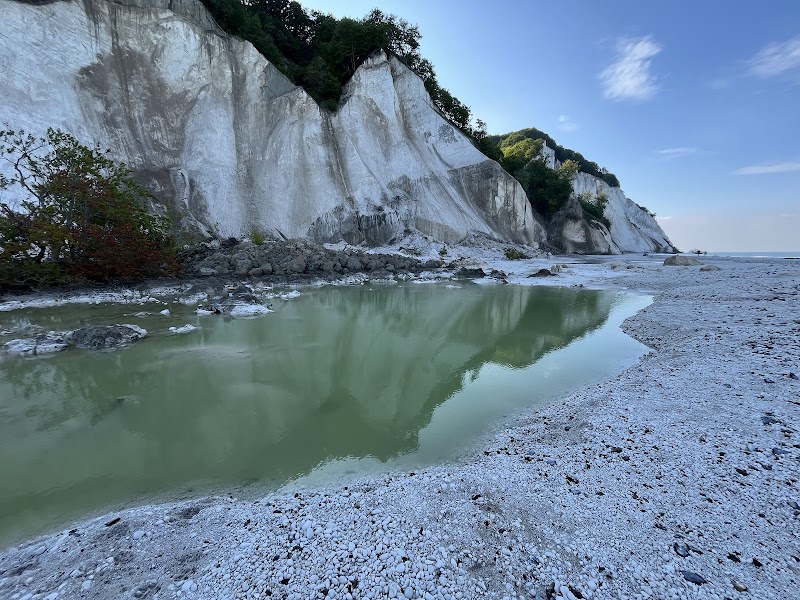
Heathland Marathon in Lüneburg: A Practical Adventure Through Lower Saxony’s Wild Heart
The Heathland Marathon in Lüneburg invites hikers to engage with the raw beauty of Lower Saxony’s heath landscapes over 42 kilometers of diverse terrain. Combining soft sandy trails and pine forests, this marathon offers both challenge and serenity for adventurers ready to explore nature’s unique pulse.
Wear Sturdy, Grippy Footwear
Prepare for shifting sands and uneven forest paths by choosing shoes with good traction and ankle support to prevent slips and injuries.
Carry Sufficient Water
The habitat is dry and water sources are scarce along the route; plan to carry 2-3 liters depending on weather and your pace.
Start Early to Avoid Heat
Beginning your trek in the morning helps you dodge the sun’s midday intensity, especially on open heath sections with little shade.
Stick to Marked Trails
Respect the fragile heathland ecosystem by staying on designated paths to protect rare flora and fauna and avoid disorientation.
Heathland Marathon in Lüneburg: A Practical Adventure Through Lower Saxony’s Wild Heart
The Heathland Marathon in Lüneburg offers a rugged, immersive encounter with one of Germany’s most distinctive natural landscapes. Stretching across approximately 42 kilometers, this route threads through the expansive heath, dense pine forests, and open moorlands of the Lüneburg Heath Nature Reserve. The terrain is a mix of soft sandy paths that silently shift beneath your boots and firmer forest trails that crunch with every step—demanding attention and respect from casual walkers and seasoned hikers alike.
Elevation changes are subtle yet persistent, rising and falling along gentle ridges with a total elevation gain near 350 meters. The heath’s open stretches place you under a wide sky that dares you to keep moving forward, while the forested sections offer shelter and a contrasting intimacy—where the whispered rustles and occasional bird calls feel like conversations with the wild.
Starting just outside Lüneburg, the marathon winds first through the Wilseder Berg area, the highest point on the heath where sweeping views reward every uphill push. The vast purple blooms of early August draw hikers into a living canvas, while the scent of juniper and heather rides the breeze as a constant companion. Alongside the paths, tranquility coexists with wildlife—watch for red deer and elusive European nightjars that claim the area as home.
Planning this trek means embracing the heath’s unpredictability. Footwear with good grip is a must, as sandy patches can shift underfoot and rain can turn stretches into slippery challenges. Hydration planning is critical; water sources are scarce along the route, so carrying sufficient supply is non-negotiable. The best months run from late spring through early fall, when the climate is mild, paths are clear of winter mud, and the landscape is alive with color.
Timing your hike is key. Early morning starts offer cooler temperatures and the chance to catch golden light over the heath, while late afternoons bring shadows that deepen the forest’s character. Avoid midday sun when the open heath exposes you to unfiltered rays.
Navigational focus is essential on this marathon. The marked trails are reliable but require attention, especially where paths converge or skirt protected zones. Respect the heath’s fierce independence—stay on trails, leave no trace, and observe local conservation guidelines that protect the unique ecosystem.
Whether you’re chasing endurance or simply craving extended time in fresh air, the Heathland Marathon challenges you with its understated demands and rewards you with a vivid portrait of northern Germany’s wild spirit. It’s a test of stamina and mindfulness, a tactile engagement with a landscape that remains untamed and unapologetic.
Nearby Trips
All Adventures
Boat Charters
Water Activities
Adventures near Lüneburg, Lower Saxony
Discover the unique and memorable adventures that make Lüneburg, Lower Saxony special.
Frequently Asked Questions
Are there any water refilling stations along the Heathland Marathon route?
No official water sources are available during the marathon. Carry your own water, with 2 to 3 liters recommended, especially in warmer months.
When is the best time to see the heath in full bloom?
Late July through August showcases the heath’s iconic purple heather covering large swaths, making this period ideal for vivid scenery.
Is navigation difficult on the Heathland Marathon?
The trails are well marked but require attention to signage, particularly at intersections. A map or GPS device is recommended for confident navigation.
Can beginners complete the Heathland Marathon?
While the marathon is accessible to hikers with moderate fitness, beginners should prepare for the distance and terrain by training with shorter hikes beforehand.
Are dogs allowed on the route?
Dogs are permitted but should be kept on a leash due to wildlife presence and fragile habitats sensitive to disturbance.
What wildlife might I encounter along the trail?
Red deer, wild boar, and nightjars are common, along with a variety of birds and insects that help the heath remain vibrant.
Recommended Gear
Trail Running or Hiking Shoes
Offers grip on sandy and forest trails, providing essential support and stability.
Hydration Pack or Water Bottles
Ensures sufficient water supply since natural water points are rare.
Lightweight Layered Clothing
Allows temperature regulation through changing weather conditions.
Sun Protection (Hat & Sunscreen)
Prevents sunburn and heat-related issues on exposed heathland stretches.
Local Insights
Hidden Gems
- "Wilseder Berg summit for expansive views often overlooked by casual visitors"
- "The small moor ponds hidden among pine clusters offering peaceful reflections"
Wildlife
- "European nightjar, a nocturnal bird that calls softly at dusk"
- "Red deer herds that graze quietly in the early morning fog"
History
"The Lüneburg Heath has historically been a grazing ground and a training area, shaping its open landscape that once supported sheep farming and military exercises."
